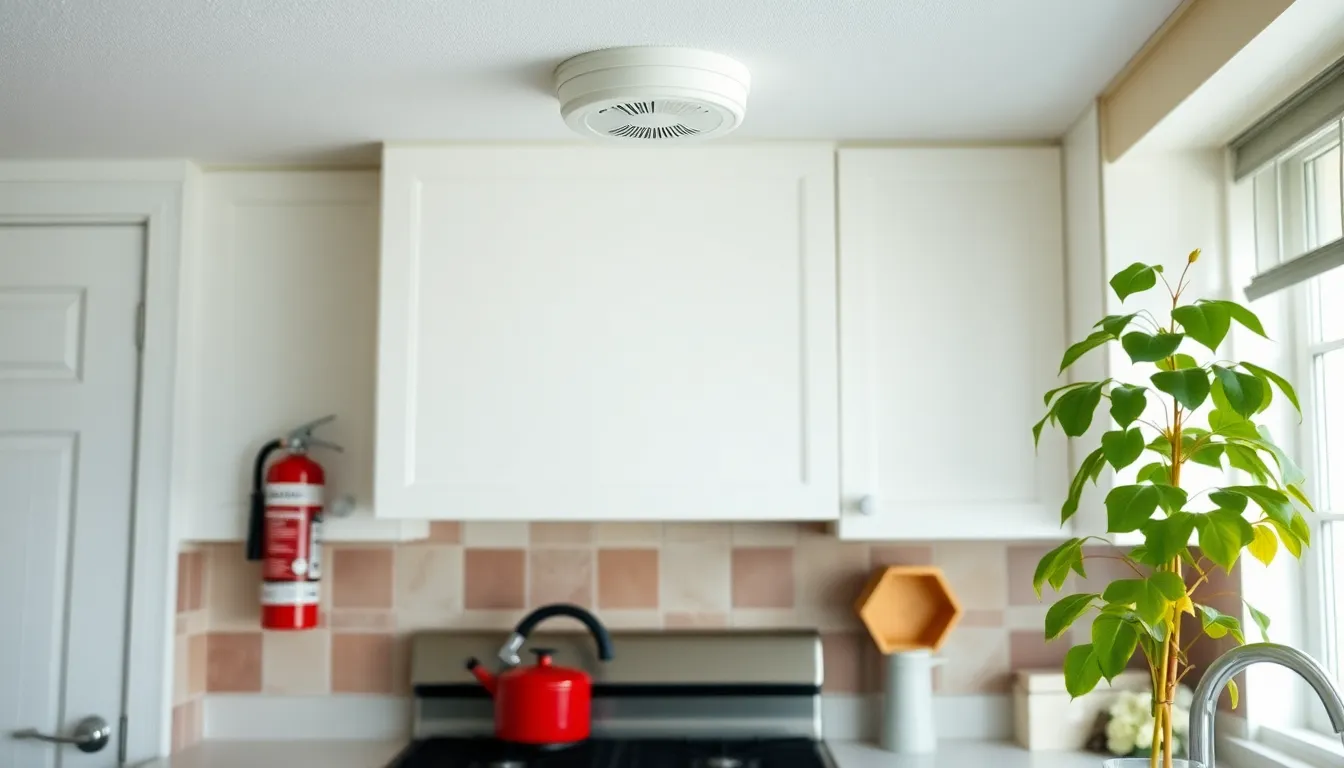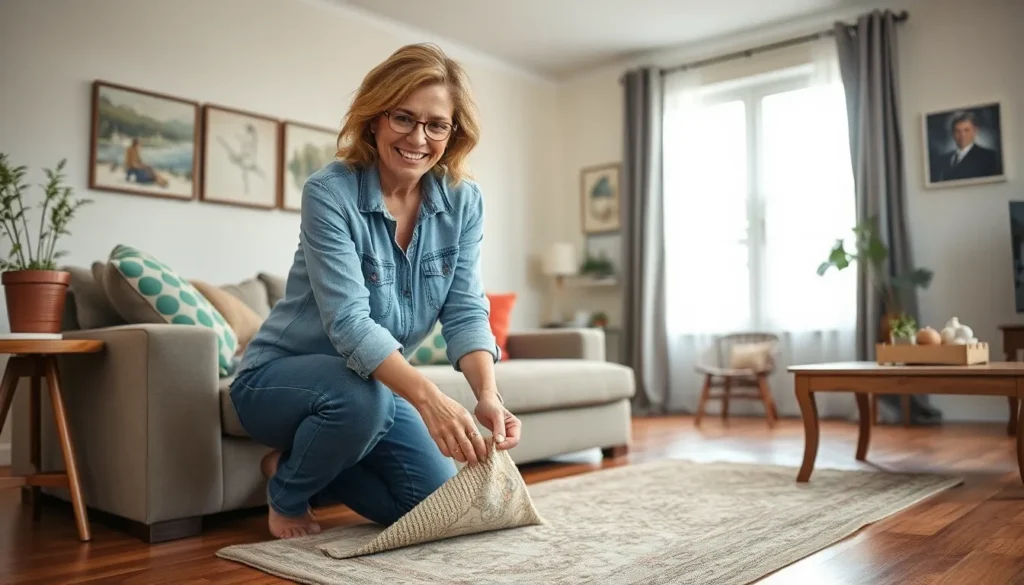Table of Contents
ToggleHome is where the heart is, but it can also be a playground for mishaps if safety isn’t a priority. Imagine tripping over a rogue shoe while trying to reach for that elusive snack in the pantry. Ouch! With a few simple tweaks, anyone can turn their home into a fortress of safety without sacrificing comfort or style.
From securing those pesky loose rugs to ensuring smoke alarms have fresh batteries, home safety tips can be both practical and a little quirky. After all, who wouldn’t want to avoid a surprise visit from the fire department while sporting their favorite pajamas? Dive into this guide and discover how to keep your castle safe, sound, and maybe even a little more entertaining.
Importance Of Home Safety Tips
Home safety tips play a vital role in creating a secure living environment. Significant risks arise from neglecting safety measures, leading to accidents that can severely impact families. Enhancing safety doesn’t mean sacrificing comfort or style; simple adjustments can significantly reduce hazards.
Accidents occur more frequently in environments that lack proper safety precautions. Loose rugs, cluttered hallways, and malfunctioning smoke alarms contribute to a higher likelihood of injury. Being proactive in securing these elements safeguards against potential mishaps.
Moreover, focusing on home safety fosters a sense of peace. Families can relax knowing they’ve taken necessary steps to protect themselves and their loved ones. Regularly maintaining safety features, such as checking fire extinguishers and reviewing emergency exits, contributes to a well-prepared household.
Statistics reveal that a significant number of household injuries result from easily preventable issues. For instance, according to the National Safety Council, more than 20 million injuries happen every year at home. Prioritizing safety tips can dramatically cut these numbers and ensure more secure living conditions.
Implementing practical safety solutions, like installing motion-detecting lights and securing heavy furniture, often requires minimal effort but yields extensive benefits. Taking the time to follow these guidelines can lead to an overall safer home.
Awareness of potential hazards and consistent safety checks ensure that everyone in the household remains protected. Establishing safety protocols and encouraging collaboration among family members reinforces a collective commitment to a secure home environment.
Common Household Hazards

Potential household hazards exist in various forms. Awareness of these risks helps create a safer living environment.
Fire Risks
Fire poses a significant threat in homes. Statistics indicate that over 350,000 residential fires occur annually in the United States. Common causes include cooking equipment, heating devices, and electrical failures. Installing smoke detectors in every room provides a necessary alert system. Keeping a fire extinguisher accessible, especially in kitchens, provides an essential safety tool. Regularly testing smoke alarms ensures they function correctly. Developing a fire escape plan with all household members enhances preparedness. Avoiding clutter around heat sources reduces ignition risks.
Slip And Fall Issues
Slip and fall accidents rank among the leading causes of household injuries. Data shows that over 8 million emergency room visits arise from falls. Loose rugs in walkways contribute significantly to tripping hazards. Securing rugs with non-slip pads minimizes this risk. Cluttered hallways can also lead to falls; keeping these areas clear decreases the chances of mishaps. Installation of grab bars in bathrooms supports stability for individuals at risk. Proper lighting throughout the home enhances visibility; this becomes crucial in stairways and entryways. Regular cleaning of spills in kitchens eliminates slippery surfaces, promoting a safer household.
Home Safety Tips For Different Areas
Home safety requires attention in various spaces. Each area of the house presents unique risks that need addressing.
Kitchen Safety Tips
Cooking equipment often causes fires. Ensure smoke detectors are working, checking batteries regularly. Keep flammable items, like paper towels, away from the stove. Using back burners reduces the chance of accidental spills. Store knives and sharp objects out of reach of children. For food preparation, maintain a clean work surface to prevent slips. Safe appliance usage includes unplugging devices when not in use. Following these kitchen safety tips minimizes hazards.
Bathroom Safety Tips
Bathrooms can pose slip and fall risks. Install non-slip mats inside and outside the shower. Grab bars near tubs and toilets enhance stability for those who may need assistance. Always keep the floor dry to reduce chances of slipping. For medications, use child-proof containers and store them out of reach. Position lightweight items within easy reach to prevent stretching. With proper precautions, bathroom safety improves significantly.
Living Room Safety Tips
Living rooms often attract clutter, leading to tripping hazards. Remove unnecessary items from walkways and arrange furniture to create clear paths. Ensure electrical cords run along walls, avoiding crossing high-traffic areas. Securing heavy furniture like bookcases can prevent tipping. Keeping breakable items out of reach of children avoids accidents. Regular cleanings help maintain a tidy space. These living room safety tips contribute to a secure home environment.
Security Measures To Consider
Home security begins with reliable locking systems for doors and windows. Ensure all entry points have sturdy locks. Consider using deadbolts on exterior doors for added strength. Windows should also feature locks, and reinforcing them can reduce vulnerability. Regularly inspect all locking mechanisms to guarantee they function properly and replace any that are faulty.
Investing in security systems enhances overall home safety. Many homeowners opt for monitored alarm systems that alert authorities during breaches. Additionally, smart security cameras allow for remote monitoring and recording of activities. This feature is especially useful, given that over 350,000 residential fires occur each year in the U.S., often due to negligence. Motion-sensor lights deter intruders, adding another layer of protection. Combine these systems to create a robust security infrastructure, ensuring peace of mind for all family members.
Prioritizing home safety is essential for creating a secure and comfortable living space. By implementing simple yet effective measures, families can significantly reduce the risk of accidents and injuries. Regular safety checks and proactive maintenance not only enhance security but also provide peace of mind.
Encouraging everyone in the household to participate in safety practices fosters a collective commitment to maintaining a safe environment. With the right precautions in place, it’s possible to enjoy a home that’s both stylish and secure. Embracing these safety tips allows families to focus on what truly matters—creating lasting memories in a safe haven.







